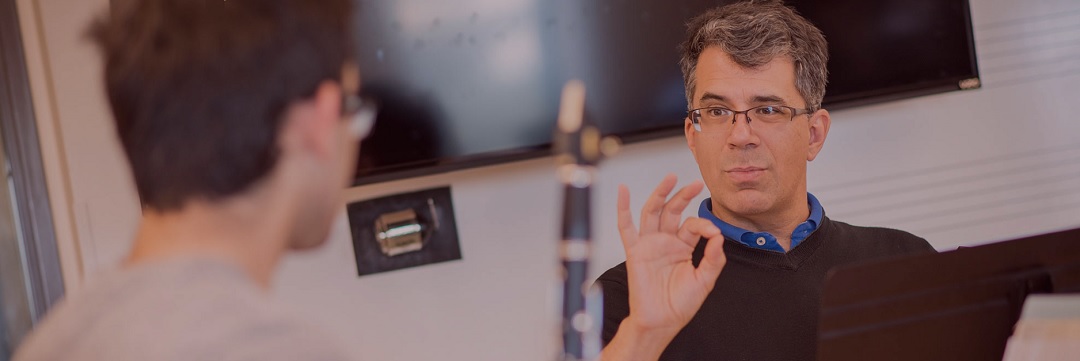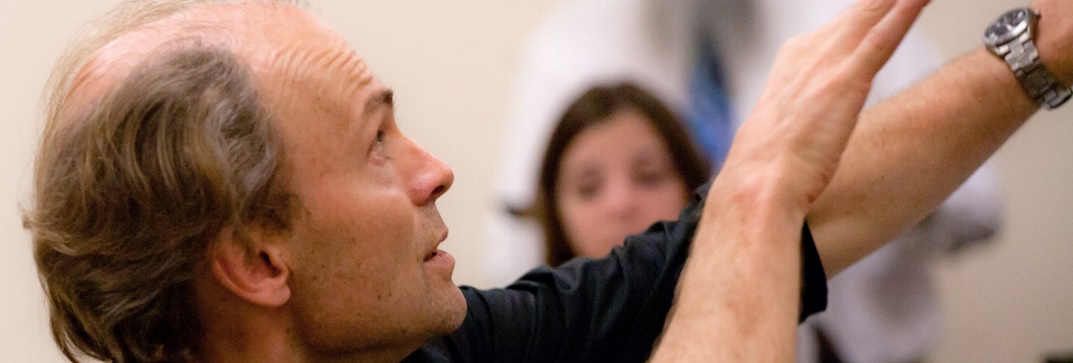On May 15, we’ll welcome back to Amateur Music Network Jerry Simas, the San Francisco Conservatory of Music professor and San Francisco Symphony clarinetist, to teach a online master class on Mozart’s Clarinet Concerto—one of the most played, and most beloved, pieces in the wind repertoire. We reached Jerry at his San Francisco home to chat about what makes this concerto so richly rewarding. And we asked him about his musical life since March 2020, when he contributed an early-pandemic guest post to our blog.
Last March you wrote: “During this time of uncertainty, let music be your go-to place. Make music if it means singing your own tunes, producing your creations on your computer, or fumbling your way on a dusty old accordion or ukulele.” Have you been able to follow your own advice?
Yes and no. I go through incredible bursts of creativity where I’m practicing a lot. We’ve had online opportunities—master classes, ensemble mashups. But I’ve realized how much of what I do involves making or teaching music with other people, in person. We all miss that! In the meantime, I’ve been serving on several San Francisco Symphony DEI [diversity, equity, inclusion] committees, and doing a lot of reading about anti-racism such as Ibram X. Kendi’s How to Be an Antiracist.
Is there any non-virtual performing in your future?
Yes! In May and June the symphony will do some indoor concerts at Davies Symphony Hall with restricted audience sizes. [Check the calendar for updates.] These concerts will initially be with strings and percussion only, but I’m optimistic that winds and brass will be added to the mix for outdoor summer concerts. I’m super-excited about that.
So are we! We’re looking forward to your May 15 master class, too. Tell us a little about your history with the Mozart Clarinet Concerto.
When I was 14 or 15 and playing in the Sacramento Youth Symphony, I received a recording of the concerto with Robert Marcellus and the Cleveland Orchestra, conducted by George Szell. It was revelatory. It’s one of the first pieces every serious clarinet player tackles. It’s often used as an audition piece for players of all levels and backgrounds—for youth orchestras, honor bands, and certainly every professional audition. It’s a piece with many different traditions and ways to interpret.
How will you approach this online master class?
It will be run like a traditional master class. I’ll talk about the concerto and about my own evolution with it—from youth orchestra to hearing great recordings to conservatory level to the professional audition circuit to performances with orchestra, and now teaching it.
I’ve invited three serious amateur or semi-professional performers to join me from their remote locations. For all of them, music is part of their identity, but they do other things professionally—one is a middle-school teacher, one is a fitness instructor and book editor, one is a lawyer. Each one will perform a segment of their assigned movement.
What can our amateur participants expect to gain from the workshop?
The great thing about these workshops is that they’re available to people in a wide cross-section of experience and ability. Everyone can try new techniques without the pressure of having to perform.
With Mozart, we tend to get stuck on the “rules” of rhythm, intonation, and beautiful sound. Good musicianship is important, of course, but I want to take it to a higher artistic level. How can we keep this classical standard fresh and alive? That’s what’s important to me.





